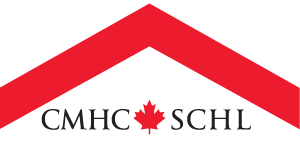Rental apartment towers provide critical affordable housing for several priority populations identified in the National Housing Strategy. Yet, many of these towers are aging and need significant upgrades. This research outlines the renewal and retrofit strategies needed to maintain these buildings. The implementation of these strategies not only ensures the sustainability of these towers, but also creates more resilient, secure and complete communities.
Download the final report (PDF)
3 Key Findings
-
✔
Rental apartment towers provide affordable housing: Aging high-rise residential towers are a critical piece of the housing sector and feasible solutions exist to retrofit them.
-
✔
Stakeholder solutions: Industry stakeholders have helped identify these solutions, which will support broader transformation of Canada’s retrofit market.
-
✔
Incorporating retrofit strategies: Tower renewal and retrofit strategies can be integrated into broader development strategies to benefit surrounding communities.
Project scope and expected outcomes
Preserving affordable housing through retrofits
This project examined the state of residential towers as a critical piece of the housing sector. It found there are about 800,000 apartments that need updates to meet modern standards. This includes “deep energy” retrofits that reduce on-site energy use. Deep energy retrofits create more sustainable housing and communities.
Upgrading post-war towers helps maintain a balanced supply of housing and prevents the loss of an affordable housing resource while fostering lower-carbon, healthier and affordable housing in complete communities.
Barriers to residential tower retrofits
Despite the benefits, a lack of knowledge, skills and specialized products within the retrofit industry in Canada has resulted in inflated costs and perceived risk.
Increasing the number of residential tower retrofits will require action across the building sector. This includes:
- supportive financing
- industry training
- regulatory change
It also means overcoming the most common barriers limiting the use of deep energy retrofits, which are:
- risk avoidance by owners
- lack of regulatory requirements to undertake retrofits
- lack of return on investment on retrofit measures, especially those tied to greenhouse gas emission reductions
- expensive retrofit design due to limited off-the-shelf products
Technical challenges and solutions
The project addressed the recurring technical challenges:
- Thermal bridging at balconies to reduce heat loss and interior cold surfaces where condensation and mould form
- Upgrading ventilation systems to prevent seasonal swings in interior temperature and comfort
- Cost-effective building envelopes for better fire safety and durability
Overcoming these technical difficulties will advance the construction industry, strengthen the economy and help Canada meet its climate goals.
Advancing retrofits: next steps
Next steps include developing a “solutions framework” to identify specific product categories and collaborating with Canadian and European partners to design and build demonstration units. These units will address identified critical gaps in:
- ventilation, heating and cooling equipment
- building cladding and envelope
- balconies
With these solutions, the project will facilitate the launch of a cross-Canada “Advancing Retrofits” forum with industry partners. This forum will act as a platform to share ideas on advancing the retrofit industry.
Read the Research Insight on Advancing Building Retrofits (PDF)
Read the Research Insight on Enabling Complete Communities (PDF)
Program: National Housing Strategy Research and Planning Fund
Activity Stream: Program of Research
Title of the Research: Saving an important source of affordable housing: Tower Renewal Implementation Program
Lead Applicant: Centre for Urban Growth and Renewal
Project Collaborators / Partners:
- Transsolar Klima Engineering
- NBLC Corporation
Get More Information:
- Contact CMHC at RPF-FRP@cmhc-schl.gc.ca or visit the Research and Planning Fund webpage
- See CMHC’s Housing Knowledge Centre for the final report (PDF) of this research project.






 Share via Email
Share via Email
